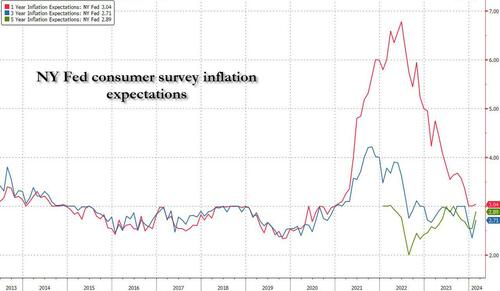DUBLIN, March 15, 2023 /PRNewswire/ -- The "Car Rental Business: Global Strategic Business Report" report has been added to ResearchAndMarkets.com's offering.
The global market for Car Rental Business estimated at US$66.6 Billion in the year 2022, is projected to reach a revised size of US$102.8 Billion by 2030, growing at a CAGR of 5.6% over the analysis period 2022-2030.
Airport, one of the segments analyzed in the report, is projected to record 4.6% CAGR and reach US$39.3 Billion by the end of the analysis period.
Taking into account the ongoing post pandemic recovery, growth in the Non-Airport segment is readjusted to a revised 6.2% CAGR for the next 8-year period.
The U.S. Market is Estimated at $25.3 Billion, While China is Forecast to Grow at 10.3% CAGR
The Car Rental Business market in the U.S. is estimated at US$25.3 Billion in the year 2022. China, the world's second largest economy, is forecast to reach a projected market size of US$15.8 Billion by the year 2030 trailing a CAGR of 10.3% over the analysis period 2022 to 2030.
Among the other noteworthy geographic markets are Japan and Canada, each forecast to grow at 4.3% and 4.8% respectively over the 2022-2030 period. Within Europe, Germany is forecast to grow at approximately 3.1% CAGR.
Select Competitors (Total 131 Featured) -
- Avis Budget Group, Inc.
- Enterprise Holdings, Inc.
- Europcar Mobility Group
- Rent-A-Wreck of America, Inc.
- Sixt AG
- The Hertz Corporation
What`s New for 2023?
- Special coverage on Russia-Ukraine war; global inflation; easing of zero-Covid policy in China and its `bumpy` reopening; supply chain disruptions, global trade tensions; and risk of recession.
- Global competitiveness and key competitor percentage market shares
- Market presence across multiple geographies - Strong/Active/Niche/Trivial
- Online interactive peer-to-peer collaborative bespoke updates
- Access to digital archives and Research Platform
- Complimentary updates for one year
Key Topics Covered:
I. METHODOLOGY
II. EXECUTIVE SUMMARY
1. MARKET OVERVIEW
- Influencer Market Insights
- World Market Trajectories
- As Covid-19 Pandemic Decimates the Demand, Car Rental Business Market Set to Incur Huge Losses in 2020
- Monthly Change in International Tourist Arrivals for January, February, & March 2020
- Global Travel &Tourism Industry Revenues (In US$ Billion) for the Years 2019 & 2020
- Global Flight Departures in First Week of April 2020 & 2019
- Battered Global Travel & Tourism Industry Steals All Hope From Car Rental Businesses
- An Introduction to Car Rental Business
- Evolution of Rent-A-Car Concept Over the Years
- Fleet Ownership Patterns: A Review
- Classification of Car Rental Business by Location & Sector
- Car Rental Business by Location
- Car Rental Business by Sector
- Car Rental Business: Current Market Scenario and Outlook
- Developed Regions: Primary Revenue Contributors
- World Car Rental Business Market by Region (2020 & 2027): Percentage Breakdown of Revenues for Developed and Developing Regions
- High Growth Opportunities in Developing Regions
- World Car Rental Business Market - Geographic Regions Ranked by % CAGR (Revenues) for 2020-2027: China, Asia-Pacific, Middle East, Latin America, Africa, Canada, USA, Japan, and Europe
- COVID-19 Pandemic Set to Dent Economic Growth Across All Regions, While Inducing Weakness Into Car Rental Business Sector
- World Economic Growth Projections (Real GDP, annual % Change) for 2019, 2020 & 2021
- COMPETITIVE SCENARIO
- Car Rental Market: A Diverse Playfield
- Leading Car Rental Firms across Regional Markets
- Emphasis on Innovative Strategies
- Personalized Offers and Specialized Services
- Subscription Packages: The New Marketing Approach
- Price Matching Systems for Assuring Customers
- End-to-End Customer Support Remains Major Focus Area
- Mergers & Acquisitions (M&A) Gather Steam
- Recent Market Activity
- Car Rental Companies Lean Towards Shared Mobility Service
- Car Rental Business - Global Key Competitors Percentage Market Share in 2022 (E)
- Competitive Market Presence - Strong/Active/Niche/Trivial for Players Worldwide in 2022 (E)
2. FOCUS ON SELECT PLAYERS
3. MARKET TRENDS & DRIVERS
- Technology Innovations to Spearhead Growth in Post Covid Environment
- Automation Steps-In to Augment Car Rental Business Performance
- IoT Holds Positive Ramifications for Car Rental Automation
- AI Identified as the New Transformative Vehicle
- Convenient Bookings and Innovative Payment Options
- Online Booking Takes Car Rentals to Higher Grounds
- Smartphones & Mobile Apps Widen Scope & Span of Car Rental Business
- Smartphone Penetration (as a Proportion of Total Mobile Users) by Region for the Years 2018 and 2025
- Increasing Implementation of GPS & Telematics
- Cloud-Based Car Rental Software: The Latest 'Tech' Innovation
- Medical Tourism, Overseas Education, and Large Sporting Events: Among Prominent Demand Drivers
- Breakdown of International Student Enrolments (in %) by Country for the Year 2018
- Key Medical Tourism Destinations by Region
- Select Most Attended Sporting Events in the World
- Young Travelers to Provide Traction to Car Rental Business
- Apprehensions Remain High on Revival of Luxury Car Rental Market
- Issues & Challenges
- Rise of Car Sharing Throws Up Biggest Challenge to Traditional Rent-A-Car Market
- Peer-to-Peer Ridehailing Drives Momentum in Car Sharing Volumes
- Car Sharing Attracts New Groups of Enterprises
- Car Manufacturers
- Power Companies
- Micromobility: Another Fast Emerging 'Muscular' Competitor
- Apprehensions Over Hidden and Additional Costs Among Cost Wary and Cost Conscious Consumers
- A Note on Additional Charges Levied In Addition to Base Rental Charges
- Growing Role of Video Conferencing and Digital Technologies in Business Communication
4. GLOBAL MARKET PERSPECTIVE
-
- es for USA, Canada, Japan, China, Europe, Asia-Pacific, Latin America, Middle East and Africa for Years 2014, 2023 & 2030
- Table 19: World Car Rental Business Market Analysis of Annual Sales in US$ Million for Years 2014 through 2030
III. MARKET ANALYSIS
IV. COMPETITION
For more information about this report visit https://www.researchandmarkets.com/r/sl8lkg
About ResearchAndMarkets.com
ResearchAndMarkets.com is the world's leading source for international market research reports and market data. We provide you with the latest data on international and regional markets, key industries, the top companies, new products and the latest trends.
Media Contact:
Research and Markets
Laura Wood, Senior Manager
press@researchandmarkets.com
For E.S.T Office Hours Call +1-917-300-0470
For U.S./CAN Toll Free Call +1-800-526-8630
For GMT Office Hours Call +353-1-416-8900
U.S. Fax: 646-607-1907
Fax (outside U.S.): +353-1-481-1716
Logo: https://mma.prnewswire.com/media/539438/Research_and_Markets_Logo.jpg
View original content:https://www.prnewswire.com/news-releases/car-rental-business-global-market-to-reach-102-8-billion-by-2030-peer-to-peer-ridehailing-drives-momentum-in-car-sharing-volumes-301772717.html
SOURCE Research and Markets
































